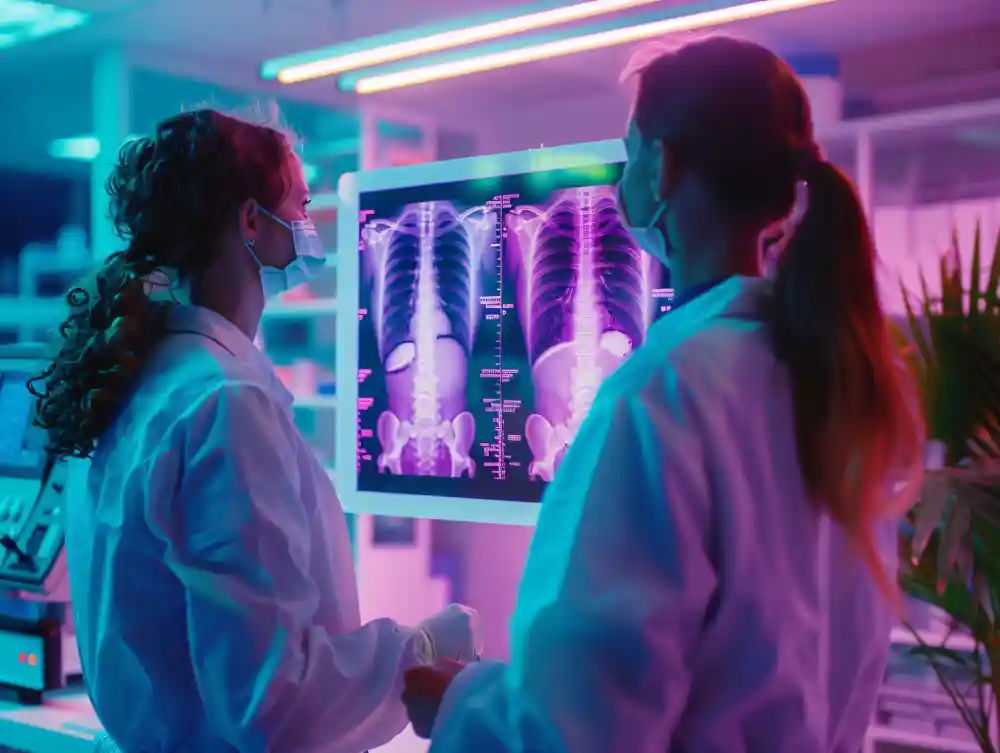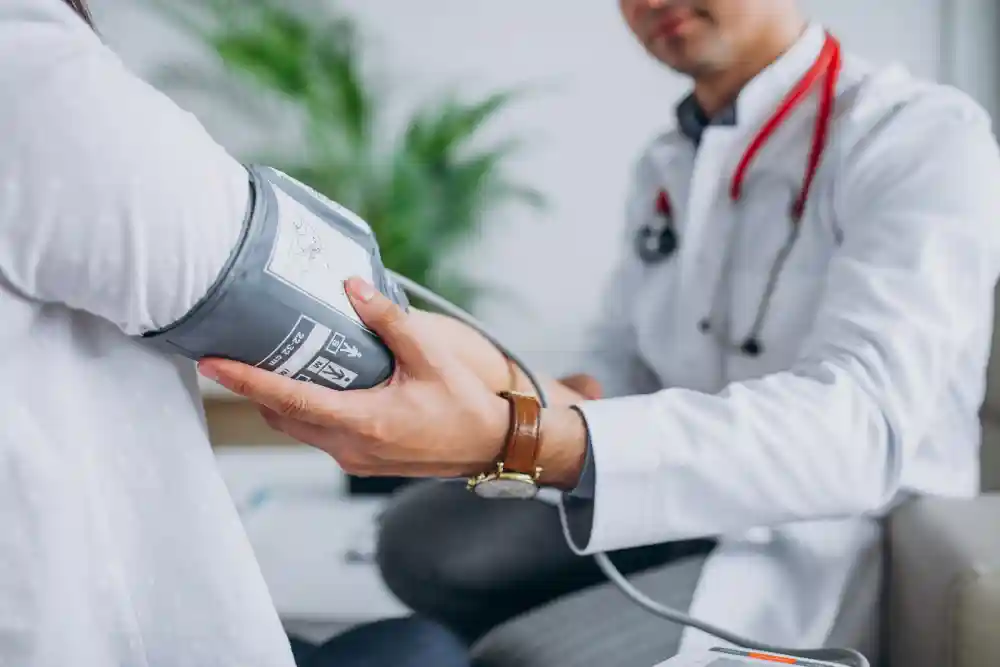Broken rib symptoms can be alarming and painful, often leaving individuals unsure about the severity of the injury. Whether you’ve experienced a direct blow to the chest or suspect a fractured rib from severe coughing, understanding the symptoms of a broken rib is crucial for proper treatment and recovery.
Mr. Marco Scarci, a leading London thoracic surgeon, provides comprehensive care for patients with chest injuries, including simple rib fractures and more serious injuries.
This guide will help you recognise broken rib symptoms and understand when to seek professional medical attention from a healthcare provider.
Understanding Broken Ribs: What Happens When Ribs Break
When discussing broken rib symptoms, it’s important to understand that rib fractures occur when one or more of the 12 pairs of ribs sustain damage from trauma or excessive force. Chest wall trauma is a common injury that can range from a minor cracked rib to more severe bone fractures affecting the chest cavity that houses vital internal organs.
Broken bones in the chest area can range from simple fractures that heal naturally to complex fractures requiring immediate medical intervention. The healing process varies depending on the type of injury and individual factors such as bone density and overall health conditions.
Primary Broken Rib Symptoms to Watch For

Sharp, Localised Pain
The most distinctive of all broken rib symptoms is sharp, intense pain in the injured area. This pain typically:
Worsens with deep breathing or breathing exercises
Intensifies during coughing or sneezing
Becomes more severe with movement or twisting
May cause you to take shallow breaths to avoid discomfort
Breathing Problems and Difficulty Breathing
Broken rib symptoms often include significant breathing difficulties. Patients may experience:
Shortness of breath during normal activities
Inability to take deep breaths without severe pain
Feeling like they cannot get enough air
Preference for maintaining an upright position to breathe more easily
These breathing problems occur because the injured rib affects the chest wall’s ability to expand properly during inspiration.
Visible Signs: Swelling and Bruising
External broken rib symptoms include:
Swelling around the injured area
Bruised ribs with visible discolouration
Tenderness when touching the chest
Possible deformity in cases of severe displacement
Crepitus: The Crackling Sound
Some patients with broken rib symptoms may notice crepitus – a crackling or grinding sensation when:
Moving the chest during breathing
Pressing on the injured area
Changing positions
This symptom indicates bone fragments rubbing against each other or air trapped in the tissues.
Severe Broken Rib Symptoms Requiring Emergency Care
Certain broken rib symptoms indicate a medical emergency requiring immediate attention from the emergency department:
Flail Chest
Flail chest occurs when multiple ribs break in multiple places, creating a segment that moves independently. This serious condition causes:
Paradoxical chest movement (the injured section moves inward during inspiration)
Severe breathing difficulties
Significant pain and distress
Signs of Internal Organ Damage
Broken rib symptoms that suggest internal injuries and related injuries include:
Severe abdominal pain
Vomiting blood
Difficulty swallowing
Signs of internal bleeding
Extreme drowsiness or confusion
Pneumothorax (Collapsed Lung)
Sharp ends of broken ribs can puncture the lung, causing:
Sudden, severe chest pain
Extreme shortness of breath
Rapid heart rate
Bluish skin colour
How Broken Rib Symptoms Are Diagnosed

Physical Examination
A healthcare provider will conduct a thorough physical exam, checking for:
Tenderness over the rib area
Visible deformity or swelling
Breathing patterns and chest movement
Signs of complications
Imaging Tests
Diagnostic tools used to confirm broken rib symptoms include:
Chest X-ray: The most common initial test for suspected rib fractures
CT scan: Provides detailed images of complex fractures
Bone scan: May be used in cases of stress fractures or when other tests are inconclusive
Risk Factors Assessment
Medical professionals evaluate risk factors and underlying medical conditions that may contribute to broken rib symptoms:
Age and bone density
Previous chest injuries
Underlying health conditions
Medication use affecting bone health (including potential side effects)
Treatment Options for Broken Rib Symptoms
Conservative Management
Most simple rib fractures heal naturally with conservative treatment. However, it’s important to note that blunt trauma is the most common cause of rib injuries, and proper management is essential regardless of the initial cause.
Pain Control:
Over-the-counter painkillers for mild discomfort
Prescription pain medications for severe pain
Nerve block procedures for persistent pain
Breathing Support:
Deep breathing exercises to prevent lung complications
Incentive spirometry to maintain lung function
Avoiding binding or wrapping the chest
Medical Interventions
More serious cases may require:
Physical therapy: To maintain chest mobility and strength
Respiratory therapy: For patients with breathing complications
Surgical intervention: For complex fractures or flail chest
Pain Relief Strategies
Effective pain management is crucial for recovery:
Ice application for the first 48 hours
Heat therapy after initial swelling subsides
Positioning techniques to reduce discomfort
Gradual return to normal activities
Recovery Time and Healing Process
The healing process for broken rib symptoms varies:
Simple fractures: Typically heal within 6-8 weeks
Complex fractures: May require 3-6 months for complete healing
Elderly patients: Often experience longer recovery times due to reduced bone density
Factors Affecting Recovery
Several factors influence the healing process:
Age and overall health
Smoking status (significantly delays healing)
Nutrition and bone health
Compliance with treatment recommendations
Preventing Complications
Understanding broken rib symptoms helps prevent serious complications and provides essential health information for proper recovery:
Lung Infection Prevention
Patients with broken ribs are at higher risk for pneumonia due to:
Reduced lung expansion from pain
Shallow breathing patterns
Decreased mobility
Prevention strategies include:
Regular deep breathing exercises
Early mobilisation when possible
Proper pain management to allow normal breathing
Long-term Monitoring
Follow-up care ensures proper healing:
Regular check-ups with healthcare professionals
Monitoring for signs of delayed healing
Assessment of lung function
Evaluation of pain levels
When to Contact a Rib Conditions Specialist

Seek immediate consultation if you experience:
Persistent or worsening broken rib symptoms
Signs of complications, such as lung infection
Difficulty managing pain despite treatment
Concerns about the healing process
Mr. Marco Scarci specialises in chest trauma and provides comprehensive care for patients with rib injuries. His expertise in thoracic surgery ensures optimal outcomes for both simple and complex fractures.
Sports Medicine and Rib Injuries
Athletes are particularly susceptible to rib injuries due to:
High-impact sports activities
Repetitive motions
Contact sports risks
Common sports-related broken rib symptoms include:
Gradual onset pain in rowing or swimming
Immediate sharp pain from direct contact
Difficulty continuing sports activities
Rib symptoms that may indicate a fractured rib requiring assessment
Living with Broken Rib Symptoms
Managing daily activities during recovery:
Sleep Positioning
Sleep in an upright position if lying flat causes pain
Use pillows to support the injured side
Avoid sleeping on the affected side
Activity Modifications
Avoid heavy lifting or strenuous activities
Take frequent breaks during daily tasks
Gradually increase activity levels as healing progresses
Nutritional Support
Proper nutrition supports the healing process:
Adequate calcium and vitamin D for bone health
Protein for tissue repair
Anti-inflammatory foods to reduce swelling
Conclusion
Recognising broken rib symptoms early and seeking appropriate medical care is essential for optimal recovery. While most rib fractures heal naturally with conservative treatment, understanding the signs of complications ensures timely intervention when necessary.
Mr. Marco Scarci’s expertise in thoracic surgery provides patients with comprehensive care for all types of chest injuries. From simple fractures to complex trauma, his specialised approach ensures the best possible outcomes for patients experiencing broken rib symptoms.
If you’re experiencing chest pain, breathing difficulties, or other concerning symptoms following an injury, don’t hesitate to seek professional medical evaluation. Early diagnosis and appropriate treatment of broken rib symptoms can prevent complications and promote faster healing.
Contact Mr. Marco Scarci today for expert evaluation and personalised treatment of your chest injury. His specialised knowledge in thoracic surgery ensures comprehensive care for all aspects of rib fracture management.